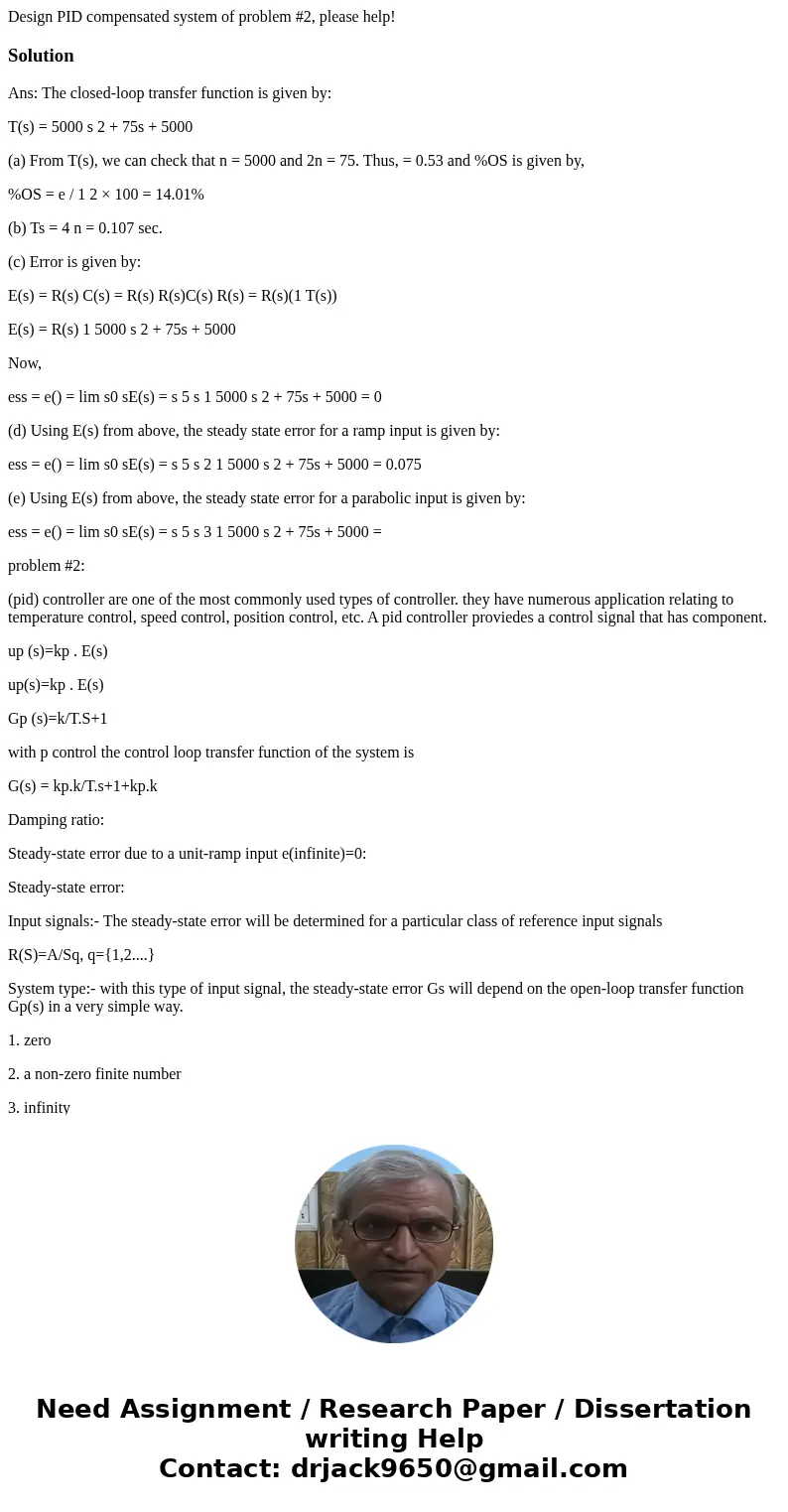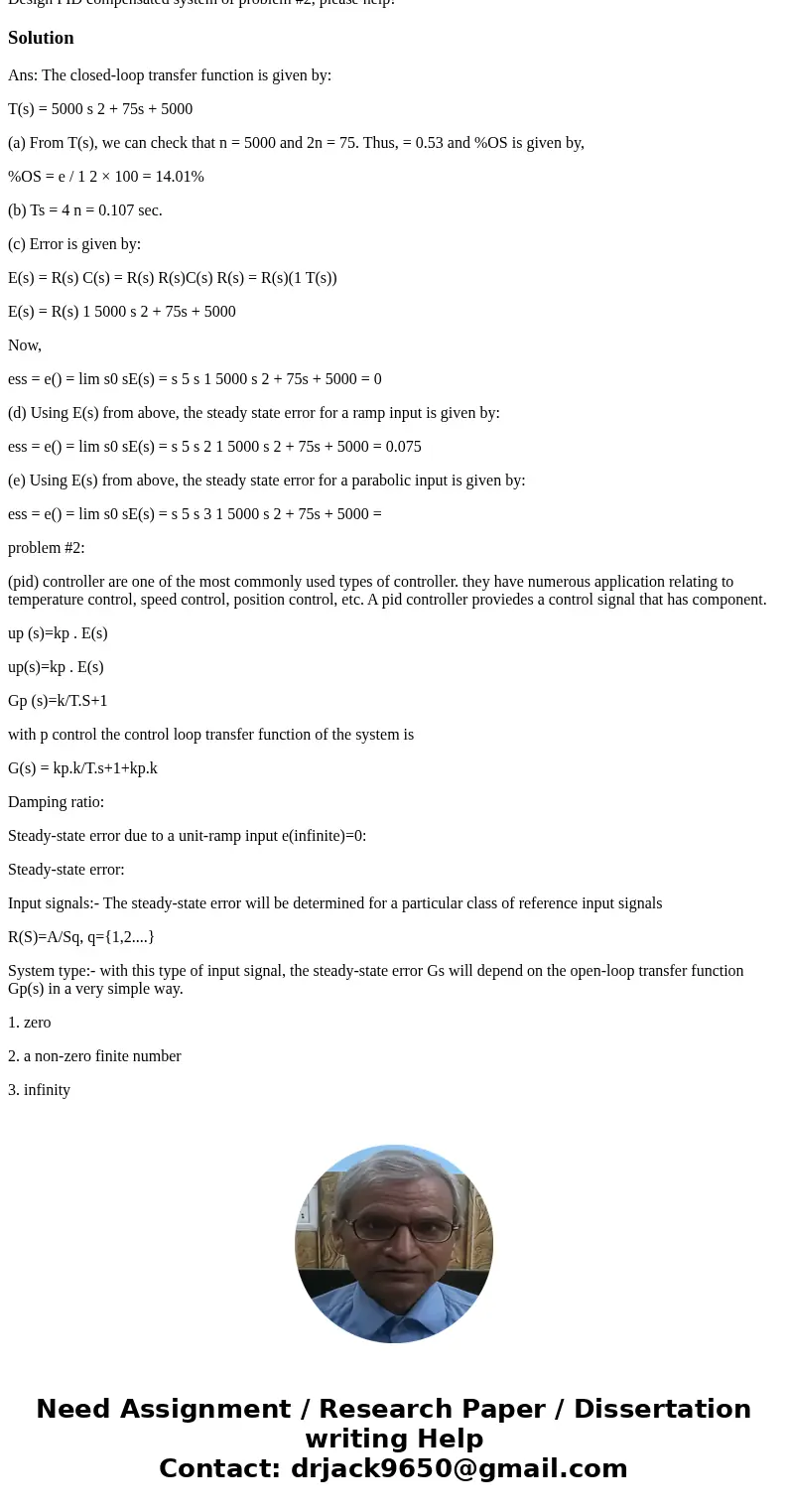Design PID compensated system of problem 2 please helpSoluti
Design PID compensated system of problem #2, please help!
Solution
Ans: The closed-loop transfer function is given by:
T(s) = 5000 s 2 + 75s + 5000
(a) From T(s), we can check that n = 5000 and 2n = 75. Thus, = 0.53 and %OS is given by,
%OS = e / 1 2 × 100 = 14.01%
(b) Ts = 4 n = 0.107 sec.
(c) Error is given by:
E(s) = R(s) C(s) = R(s) R(s)C(s) R(s) = R(s)(1 T(s))
E(s) = R(s) 1 5000 s 2 + 75s + 5000
Now,
ess = e() = lim s0 sE(s) = s 5 s 1 5000 s 2 + 75s + 5000 = 0
(d) Using E(s) from above, the steady state error for a ramp input is given by:
ess = e() = lim s0 sE(s) = s 5 s 2 1 5000 s 2 + 75s + 5000 = 0.075
(e) Using E(s) from above, the steady state error for a parabolic input is given by:
ess = e() = lim s0 sE(s) = s 5 s 3 1 5000 s 2 + 75s + 5000 =
problem #2:
(pid) controller are one of the most commonly used types of controller. they have numerous application relating to temperature control, speed control, position control, etc. A pid controller proviedes a control signal that has component.
up (s)=kp . E(s)
up(s)=kp . E(s)
Gp (s)=k/T.S+1
with p control the control loop transfer function of the system is
G(s) = kp.k/T.s+1+kp.k
Damping ratio:
Steady-state error due to a unit-ramp input e(infinite)=0:
Steady-state error:
Input signals:- The steady-state error will be determined for a particular class of reference input signals
R(S)=A/Sq, q={1,2....}
System type:- with this type of input signal, the steady-state error Gs will depend on the open-loop transfer function Gp(s) in a very simple way.
1. zero
2. a non-zero finite number
3. infinity


 Homework Sourse
Homework Sourse